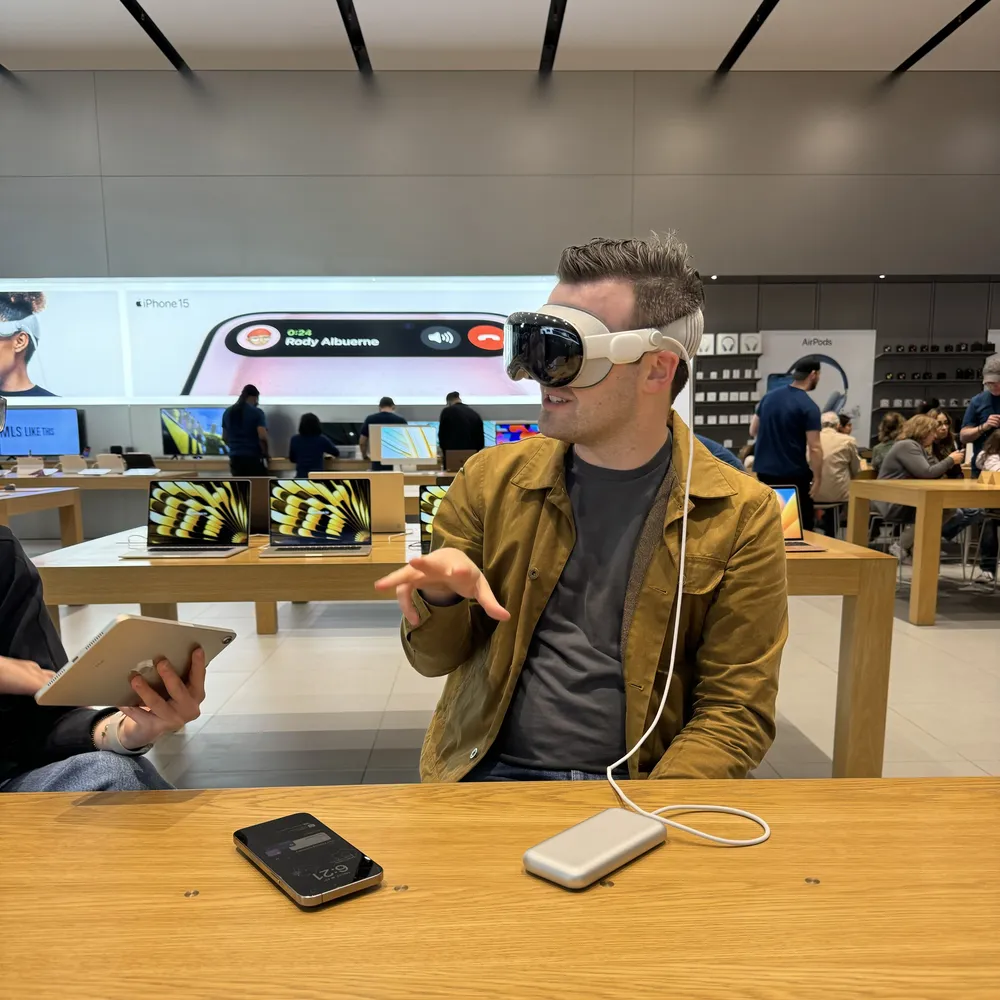First impressions of Apple Vision Pro

There’s tech in this thing that doesn’t seem like it should be possible. The extended reality features are the biggest thing for me—app windows casting shadows onto nearby surfaces will never cease to be mind-blowing to me. The persistence of windows you’ve placed around your environment feels incredible. Apps stick to the surfaces near you and remember their relative placement in space. Others at the Apple Store seemed to dismiss my excitement, but I maintain that ARKit plus all of the depth sensors in Vision Pro1 are among the most impressive pure technical achievements I’ve seen in my lifetime.
The real-time video passthrough was better than I expected. Everything felt perfectly at eye level, despite the cameras being (to my knowledge) a few centimeters below my usual sight line. And the resolution of those more-than-4K-per-eye displays didn’t disappoint. The feed was real-time to an impressive extent, but the muted, desaturated colors—while better than any other headset I’ve tried—kind of took me out of the realism. The “screen door” effect of visible pixels from the Meta Quest was gone, but it still can’t match the color gamut of real life.
The guided demo that the Apple store specialist facilitated was predictably heavily curated and focused, and emphasized traditional VR demo highlights—hey look, you’re underwater, you’re tightrope-walking over a canyon, you’re watching Super Mario Bros. in 3D. But the spatial family videos nearly brought my wife to tears. There’s something about the stereoscopic realism that creates an emotional reaction, and I can’t explain it.
This is the best expression yet of what augmented reality (or extended reality, or virtual reality, or spatial computing) can be. This is the closest we’ve come to the promise of Neuromancer and Ready Player One and all of the VR dystopias from the past 30 years of pop culture. But those were dystopias, not a product roadmap.2 That dissonance for me is likely why this is the first new Apple product in two decades that I haven’t bought on day one, and don’t plan to.
It’s incredible to relive your child’s birthday through immersive 3D videos, but that excitement skips past the fact that you’re living through the actual moment your kid blows out candles with a massive glossy computer on your face, and with simulated eyeballs staring back at them to boot.
In the end, I’m not sure I’ll ever need this. It’s a tough sell today to put a computer on your face, although in a few years this form factor will undoubtedly be more commonplace, simply by sheer force of will by large technology companies like Meta and Apple. The entertainment use cases are cool, but there’s no killer app just yet.
As an aside, the floating in-environment keyboard is just as dumb as I imagined.
-
The inclusion of the “Pro” suffix in this first-generation product is reminiscent of the MacBook Pro introduction in 2006. On an infinite timeline, Pro is a relative term, obviously suggesting the addition of an entry-level “Apple Vision” or even “Apple Vision Air” in the future. But in the meantime, Apple’s insistence on using the full name “Apple Vision Pro” in place of a more generalized product family name (like “Vision,” for instance) is awkward. ↩
-
Obligatory.
Sci-Fi Author: In my book I invented the Torment Nexus as a cautionary tale
— Alex Blechman (@AlexBlechman) November 8, 2021
Tech Company: At long last, we have created the Torment Nexus from classic sci-fi novel Don't Create The Torment Nexus